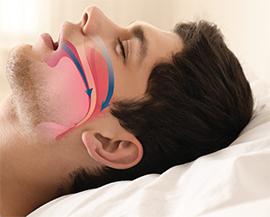
Treatment with the serotonin-norepinephrine reuptake inhibitor venlafaxine in patients with obstructive sleep apnoea (OSA) does not yield significant improvements in the apnoea–hypopnea index (AHI) and even appears to worsen sleep architecture, as shown in a study.
Twenty OSA patients (25 percent female) underwent two overnight polysomnograms >4 days apart receiving either 50-mg immediate-release venlafaxine or placebo before bedtime. These patients were middle-aged, overweight or obese, and had Epworth sleepiness scores ranging clinically from no to severe sleepiness.
Overall, there was no significant between-group difference observed in the primary outcomes of AHI (mean reduction, –5.6 events/h, 95 percent confidence interval [CI], –12.0 to 0.9; p=0.09) or SpO2 nadir (median increase, 1.0 percent, 95 percent CI, –0.5 to 5; p=0.11).
Active treatment resulted in reduced total sleep time, sleep efficiency and rapid eye movement (REM) sleep, as well as increased non-REM stage 1 sleep (p<0.05). Exploratory posthoc analyses revealed that the drug decreased (ie, improved) the ventilatory response to arousal (–30 percent; p=0.049) and lowered (ie, worsened) the predicted arousal threshold (–13 percent; p=0.02), with no effects on other pathophysiological traits.
Moreover, arousal threshold modified the response to venlafaxine treatment (p=0.002), such that AHI improved by 19 percent in patients with high arousal threshold (–10.9/h) but tended to increase in patients with a low arousal threshold (7/h). Other factors associated with treatment response were elevated AHI and less collapsible upper airway anatomy at baseline (p<0.02).
Reduced pharyngeal muscle tone during sleep is one of the key mechanisms underlying OSA. However, the present data suggest that contrary to expectations, pharmacological augmentation of central serotonergic/adrenergic tone failed to produce an improvement in muscle recruitment, the researchers said. “Careful patient selection based on pathophysiological traits or combination-therapy with drugs countering its alerting effects may produce a more robust response.”